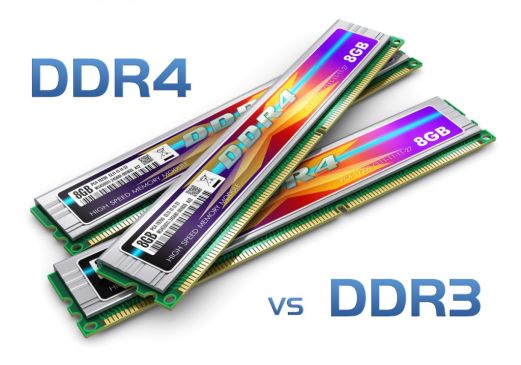Advantages of DDR4 RAM over DDR3

Random access memory (RAM) is one of the most important aspects of a computer that assists in storing and transferring information. There are a lot of considerations one has to make while buying an electronic gadget and RAM is one of the most important one. In fact, buyers are often confused about the RAM they would need in their computers/laptops.
RAMs have evolved tremendously since their inception and the latest addition to the family of dynamic random access memory (DRAM) is the DDR4. DDR4 is a more sophisticated and powerful RAM compared to DDR3 and was released in 2014. The primary difference between both is that DDR4 offers high transfer rates, reduced usage of power, increased speed and efficiency, battery saving and allowance for addons. Read on to know these points in detail and decide how different DDR4 is from DDR3.
1. Higher Transfer Rates
Transfer of information has to be very quick and it is the role of the RAM to take care of this. DDR3 RAMs have transfer rates of about 800 and 2133 MT/s (million transfers per second), and on the other hand, DDR4 have transfer rates of about 133 and 4266 MT/s. Thus, DDR4 is certainly the obvious choice when it comes to speed and better functionality.
2. Reduced Usage of Power
A DDR4 RAM consumes lesser energy when compared to DDR3 and operates on as few as 1.05 Volts. On the other hand, DDR3 operates on 1.5 volts and DDR2 used to run on 1.8 volts. This will drastically reduce the power consumption and thus avoid frequent charging of laptop batteries. Given that people are always busy and expect portability more than anything, DDR4 RAM is the perfect choice for people on the go.
3. Allows for Expansion
DDR4 allows for addition of multiple powerful processors along with the existing ones to boost the computational efficiency of the device and also increase the battery power. Additional hardware can always come in handy when highly memory consuming activities like games and Photoshop are used on your laptop.
4. Larger DIMM Capabilities
Since the chip densities of DDR4 RAM is much higher than the chip density of DDR3, the former offer larger DIMM capabilities to the user. While DDR3 have chip densities of 512Mb-8 Gb, DDR4 have chip densities that range from 4Gb- 16Gb. Higher the number of memory modules on the motherboard, greater the capacity of the device to perform complex functions.
5. Price Sensitive
Lastly, though DDR4 RAM is the latest memory in the market and offers the above mentioned advantages, its pricing is almost similar to the pricing of DDR3. DDR4 was released in 2014 and since then it has overtaken the price sensitive tag that DDR3 had enjoyed for so many years. These days, the price difference is almost negligible between the both.





Leave a Reply